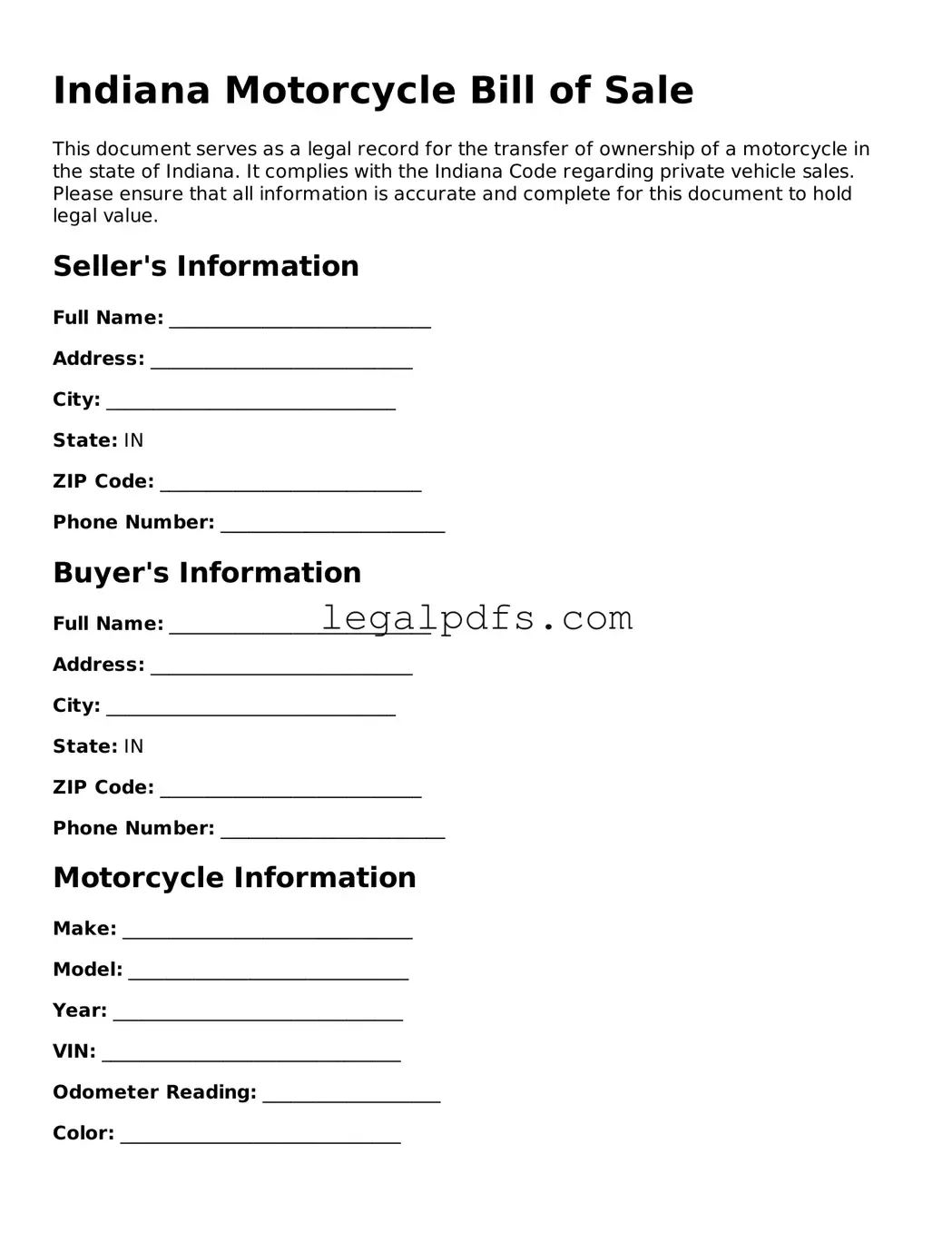Indiana Motorcycle Bill of Sale
This document serves as a legal record for the transfer of ownership of a motorcycle in the state of Indiana. It complies with the Indiana Code regarding private vehicle sales. Please ensure that all information is accurate and complete for this document to hold legal value.
Seller's Information
Full Name: ____________________________
Address: ____________________________
City: _______________________________
State: IN
ZIP Code: ____________________________
Phone Number: ________________________
Buyer's Information
Full Name: ____________________________
Address: ____________________________
City: _______________________________
State: IN
ZIP Code: ____________________________
Phone Number: ________________________
Motorcycle Information
Make: _______________________________
Model: ______________________________
Year: _______________________________
VIN: ________________________________
Odometer Reading: ___________________
Color: ______________________________
Sale Information
Sale Date: ___________________________
Sale Price: $_________________________
Terms and Conditions
By signing below, the Seller affirms that the above information about the motorcycle is accurate to the best of their knowledge. The Seller confirms the motorcycle is sold "as-is" without any implied warranty. The Buyer accepts the motorcycle under these conditions and agrees to the specified sale price.
Signatures
Seller's Signature: _______________________________ Date: _________
Buyer's Signature: ________________________________ Date: _________
This document is advised to be retained in the personal records of both the buyer and the seller for a minimum period as specified under Indiana law.
